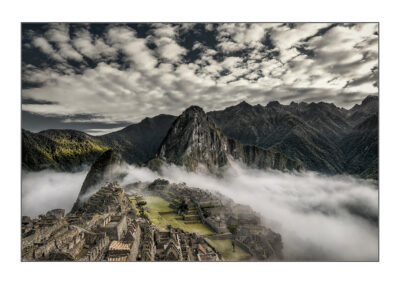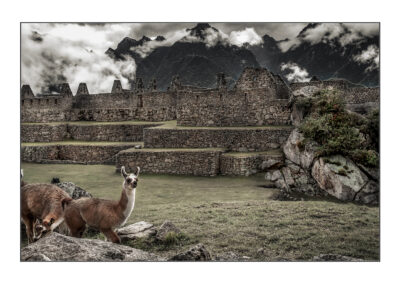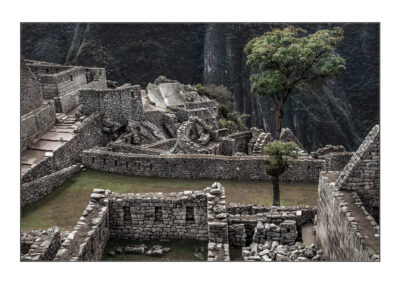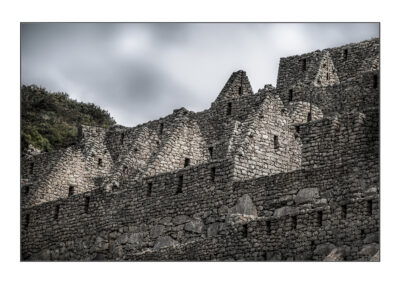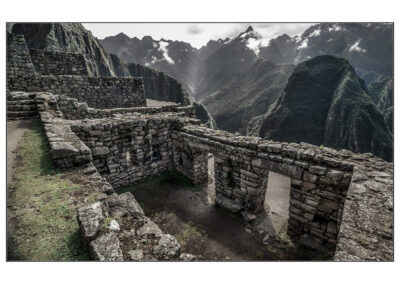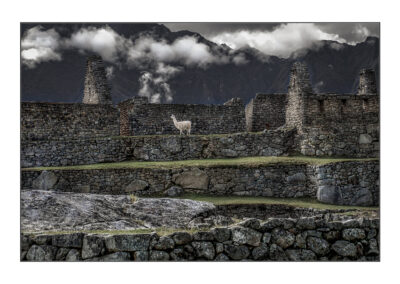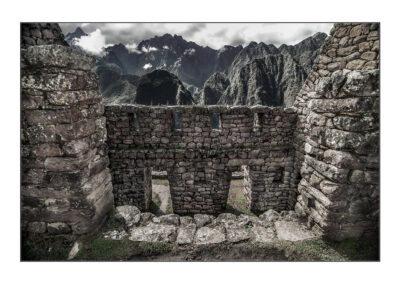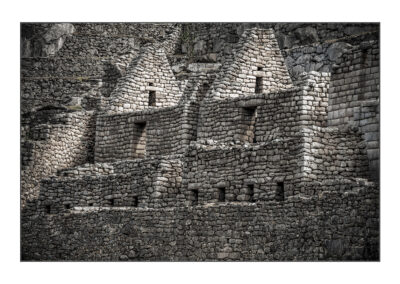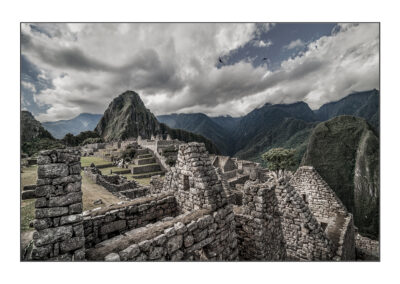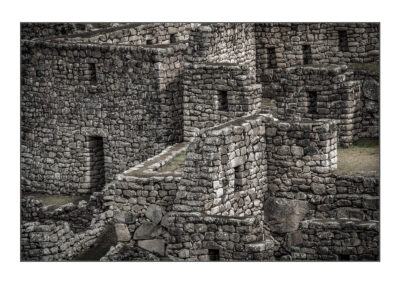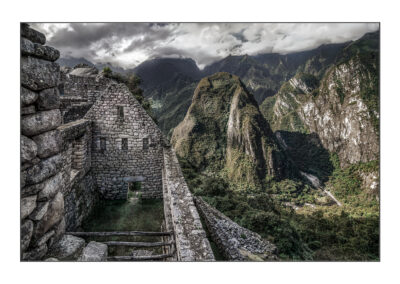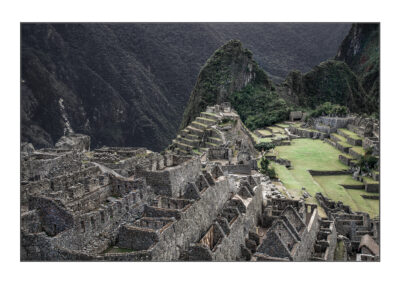MACHU PICHU
| leggi il commento in fondo alla pagina | lee el comentario al final de la página | read the comment at the bottom of the page |
Italiano
Intorno alle 15:30 presi un trenino che da Ollantaytambo mi ha portato ad Agua Calientes. Una sola rotaia che si arrampica sempre più in alto, sulle Ande, per poi scendere in picchiata e risalire di nuovo, costeggiando il rio Urubamba. Agua Calientes è poco più di un villaggio, alquanto bruttino, annidato nella profonda e stretta valle sottostante le antiche rovine inca, posta a metà strada tra la foresta amazzonica e le Ande. Si pensa che Machu Picchu sia stata costruita dall’imperatore inca Pachacútec, intorno al 1440 e abitata fino al 1532, per essere successivamente abbandonata con la conquista spagnola. La posizione strategica della città , da un punto di vista militare, era formidabile perché nascosta dalla foresta circostante ed i profondi dirupi che la circondano la rendono praticamente inaccessibile. Infatti, una volta abbandonata, la sua posizione è rimasta sconosciuta per quattro secoli, fino al 1911 grazie alle ricerche di Hiram Bingham, che era alla ricerca dell’antica Città Perduta degli Inca.Mi sveglio alle 4 del mattino perché conto di arrivare in cima alla montagna prima dell’alba. Man mano che salgo vengo avvolto sempre più dalla nebbia, ma una volta arrivato in cima, con i primi raggi di sole, comincia a diradarsi e Machu Picchu, che in lingua quechua significa “vecchia montagna”, mi appare in tutto il suo splendore.
Español
Alrededor de las 15:30 tomé un tren que desde Ollantaytambo me llevó a Aguas Calientes. Una sola vía que sube cada vez más alto en los Andes, para luego descender en picada y volver a subir, bordeando el río Urubamba. Aguas Calientes es poco más que un pueblo, bastante feo, anidado en el profundo y estrecho valle debajo de las antiguas ruinas incas, situado a medio camino entre la selva amazónica y los Andes. Se cree que Machu Picchu fue construida por el emperador inca Pachacútec alrededor de 1440 y habitada hasta 1532, para ser posteriormente abandonada con la conquista española. La posición estratégica de la ciudad, desde un punto de vista militar, era formidable porque estaba oculta por la selva circundante y los profundos precipicios que la rodean la hacen prácticamente inaccesible. De hecho, una vez abandonada, su ubicación permaneció desconocida durante cuatro siglos, hasta 1911 gracias a las investigaciones de Hiram Bingham, quien buscaba la antigua Ciudad Perdida de los Incas.Me despierto a las 4 de la mañana porque planeo llegar a la cima de la montaña antes del amanecer. A medida que subo, me envuelve cada vez más la niebla, pero una vez llegado a la cima, con los primeros rayos del sol, comienza a disiparse y Machu Picchu, que en lengua quechua significa “montaña vieja”, se me aparece en todo su esplendor.
English
Around 3:30 PM, I took a small train from Ollantaytambo to Aguas Calientes. A single rail climbs higher and higher into the Andes, then drops steeply and rises again, skirting the Urubamba River. Aguas Calientes is little more than a village, rather unattractive, nestled in the deep and narrow valley beneath the ancient Inca ruins, situated halfway between the Amazon rainforest and the Andes. It is believed that Machu Picchu was built by the Inca emperor Pachacútec around 1440 and inhabited until 1532, later being abandoned with the Spanish conquest. The city’s strategic position, from a military standpoint, was formidable because it was hidden by the surrounding forest and the deep ravines that encircle it make it practically inaccessible. In fact, once abandoned, its location remained unknown for four centuries until 1911, thanks to the explorations of Hiram Bingham, who was searching for the ancient Lost City of the Incas.I wake up at 4 in the morning because I plan to reach the top of the mountain before dawn. As I climb, I am increasingly enveloped by the mist, but once I reach the top, with the first rays of the sun, it begins to clear, and Machu Picchu, which in Quechua means “old mountain,” appears before me in all its splendor.

